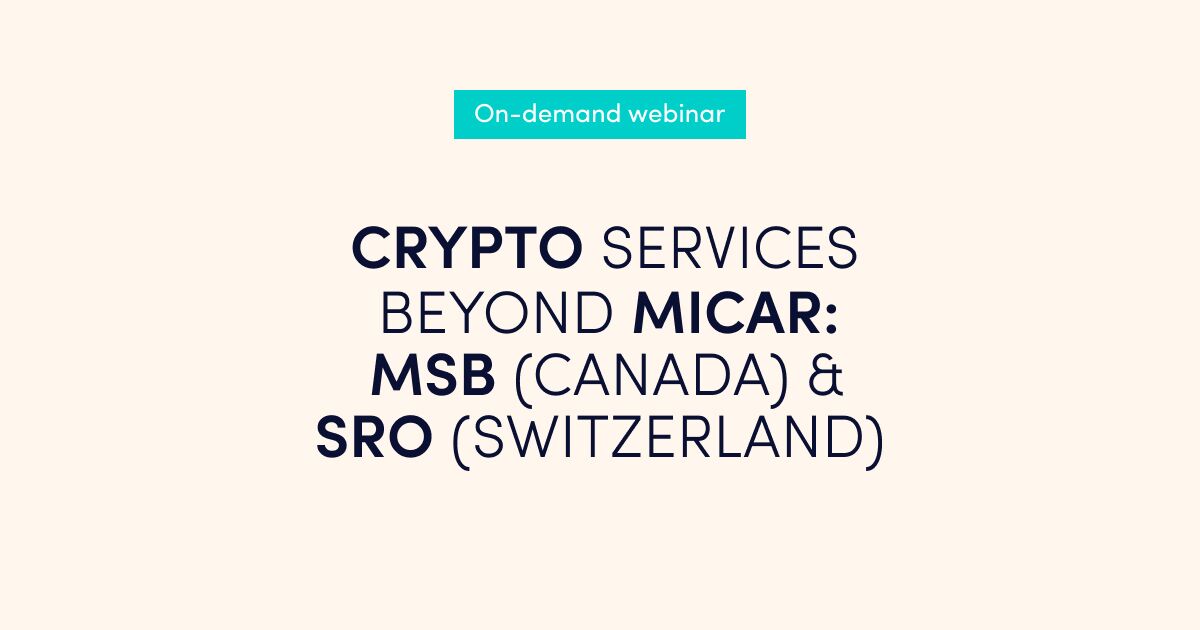Cloud banking is emerging as a powerful force reshaping how banks and financial entities operate and deliver services to their customers. In this article, we will explore what cloud banking entails, its uptake in the industry, the challenges banks and financial entities face, and the driving forces behind this shift.
Additionally, we’ll delve into the key differences between cloud-based banking platforms and on-premise solutions, the advantages of cloud banking, types of cloud hosting environments, migration considerations, challenges of cloud-native banking, and the array of services offered under the umbrella of cloud banking.
- What is Cloud Banking?
- Challenges Facing financial institutions and how cloud banking can overcome these challenges
- Cloud-based core banking platform Macrobank by Advapay
- Exploring Cloud Banking: Advantages and Disadvantages
- Making the Right Choice – Cloud Banking vs. On-premise Banking
- Leading Cloud Options for Banking
- Choosing the Best Cloud for Banking: Considerations and Options
- Conclusion
- Advapay at stake
What is Cloud Banking?
Cloud-based banking, also known as cloud banking, refers to delivering banking services and solutions through cloud computing technology. In this model, banks and other financial entities utilise remote servers hosted on the Internet by third-party providers to store data, run applications, and manage various banking functions. Cloud-based banking enables financial institutions to access computing resources and services on demand, offering scalability, flexibility, and cost-efficiency compared to traditional on-premise banking systems.
Cloud banking encompasses various banking functions and services delivered through cloud-based banking platforms. These include core banking systems, customer relationship management, payments processing, risk management, compliance, and analytics. By migrating their operations to the cloud, banks can streamline processes, improve operational efficiency, and enhance customer experiences while reducing costs and mitigating risks.
The adoption of cloud banking has been steadily increasing across the financial services industry. Banks of all sizes, from global institutions to regional players and financial services companies, embrace cloud-based solutions to modernise their operations and enhance customer experiences. According to the Allied Market Research’s report, the cloud computing banking market was valued at $67.9 billion in 2022 and is estimated to reach $301 billion by 2032, exhibiting a CAGR of 16.3% from 2023 to 2032. The global cloud banking market’s growth is fueled by digital transformation initiatives, regulatory pressures, and changing consumer preferences.
Challenges Facing financial institutions and how cloud banking can overcome these challenges
Banks and other financial institutions face many challenges that require innovative solutions to remain competitive and resilient. Financial entities must navigate a complex and dynamic environment to thrive in the digital age, from increasing regulatory pressures to changing customer expectations and technological advancements. Cloud banking offers numerous benefits to address these challenges.
Regulatory Compliance
One of the primary challenges facing banks and other financial institutions is regulatory compliance. Financial institutions operate in a heavily regulated environment governed by numerous laws, regulations, and standards to protect consumers, safeguard financial stability, and prevent financial crimes. Compliance requirements can be complex, fragmented, and constantly evolving, posing challenges for banks to ensure adherence while managing costs and operational efficiency.
Cloud banking offers financial institutions a scalable and cost-effective solution to address regulatory compliance challenges. Cloud-based banking platforms provide robust security features, encryption mechanisms, and compliance certifications to safeguard sensitive data and transactions. Additionally, cloud providers undergo regular security audits and compliance assessments to ensure adherence to regulatory requirements and industry standards, thereby alleviating the burden of compliance on banks.
Legacy Systems and Infrastructure
Many financial institutions grapple with outdated legacy systems and infrastructure that are costly to maintain, difficult to integrate, and lack the agility and scalability required to meet evolving business needs. Legacy systems can hinder innovation, slow time-to-market for new products and services, and increase operational risks and inefficiencies.
Cloud-based banking enables banks to modernise their operations and overcome the limitations of legacy systems. By migrating to cloud-based banking platforms, banks can leverage scalable infrastructure, flexible deployment options, and advanced technologies to streamline processes, improve operational efficiency, and drive innovation. Cloud platforms offer seamless integration with existing systems, enabling banks to modernise gradually while maintaining business continuity.
Cybersecurity Threats
Cybersecurity threats pose a significant risk to banks as cybercriminals continue to target financial institutions to steal sensitive data, commit fraud, and disrupt operations. Cyber-attacks, such as data breaches, ransomware, phishing, and malware, can result in financial losses, reputational damage, regulatory fines, and legal liabilities, undermining trust and confidence in banks.
Cloud banking offers enhanced security features and protections to mitigate cybersecurity threats. Cloud providers invest heavily in cybersecurity measures, including encryption, access controls, intrusion detection, and continuous monitoring, to safeguard against cyber-attacks and data breaches.
Additionally, cloud platforms undergo regular security audits, penetration testing, and compliance certifications to ensure the integrity and confidentiality of sensitive information.
Customer Expectations
Customers’ expectations are evolving rapidly in the digital age, driven by technological advancements, changing demographics, and shifting preferences. Today’s consumers demand seamless, personalised, and convenient banking experiences across multiple channels, including online, mobile, and social media. Financial institutions must innovate and adapt to meet these evolving customer expectations or risk losing market share to competitors. Read about the main differences in digital banking technology for fintechs and traditional banks.
Cloud-based banking enables banks and other financial institutions to enhance customer experiences through digital innovation and agility. Cloud-based banking platforms offer scalability, flexibility, and accessibility to deliver personalised banking services, omnichannel experiences, and real-time customer interactions. Financial entities can leverage cloud-native technologies, such as artificial intelligence, machine learning, data analytics, and automation, to personalise offerings, optimise processes, and anticipate customer needs proactively.
Cost Pressures
Cost pressures are a perennial challenge for banks as they strive to maintain profitability in an increasingly competitive and commoditised market environment. Financial institutions face rising operating costs, regulatory compliance expenses, and capital requirements. At the same time, revenue growth remains constrained by low-interest rates, margin compression, and market saturation.
Cloud banking offers cost-effective solutions to alleviate cost pressures and improve financial performance. Cloud-based banking platforms operate on a pay-as-you-go pricing model, where banks only pay for the resources and services they use. This eliminates the need for upfront hardware, software licenses, and maintenance investments. Consequently, it results in a lower total cost of ownership (TCO), improved cost predictability, and enhanced resource utilisation, enabling banks to allocate resources more efficiently and invest in growth initiatives.
Cloud-based core banking platform Macrobank by Advapay
Advapay offers the Macrobank cloud-based core banking platform designed to meet the evolving needs of banks and fintech companies in the cloud environment. Our SaaS solution, Macrobank, ensures high performance, scalability, and resilience. Our team has thoroughly tested it for performance and availability.
Advapay supports financial services companies when they launch or transition from another provider:
- Diverse Product Range: Macrobank offers out-of-the-box products such as multicurrency current accounts, payment cards, various payment types, and currency conversion.
- Modular Approach: Our platform adopts a modular approach, allowing customers to select and integrate different modules such as accounts, payments, currency exchange, cards, and financial accounting according to their needs.
- Security: Macrobank prioritises security from the ground up, having undergone rigorous penetration testing by cybersecurity specialist Bridewell. Furthermore, it complies with PSD2 and Strong Customer Authentication (SCA) requirements, ensuring secure and encrypted communication between all components.
- Integration Capabilities: Benefit from ready-to-use integrations with various Banking-as-a-Service (BaaS) providers and other payment services or compliance providers. Additionally, Macrobank can be seamlessly integrated with new providers as needed.
- White-Label Web and Mobile Banking Apps: Utilise our front-to-back solution, including the engine, operator’s interface, and end-user apps. Our advanced web and mobile banking applications offer customer-centric functionalities like balance checking, statement viewing, and payment processing.
- Flexible Packages and Deployment Options: Choose from various packages and deployment schemes tailored to your business needs. We offer flexible payment options, including SaaS, software licensing, or purchasing source codes. Special packages are available for small companies and startups, and deployment methods can be customised to align with your business objectives, whether cloud-based SaaS or on-premises deployment.
Exploring Cloud Banking: Advantages and Disadvantages
Advantages of Cloud Banking
Scalability
One primary advantage of cloud-core banking solutions is scalability. Cloud platforms offer elastic scalability, allowing banks to scale their infrastructure and services up or down based on demand without significant upfront investments in hardware or infrastructure. This flexibility enables banks to more effectively adapt to changing market conditions and customer needs.
Cost-efficiency
Cloud core banking solutions operate on a pay-as-you-go pricing model, where financial institutions only pay for the resources and services they use. This eliminates the need for upfront investments in hardware, software licenses, and maintenance, resulting in a lower total cost of ownership (TCO) and improved cost predictability. Additionally, cloud platforms offer economies of scale, enabling banks and other financial entities to achieve cost efficiencies through shared infrastructure and resources.
Accessibility
Cloud core banking solutions provide greater accessibility to banking services for both customers and employees. Banks can access core banking functions and data from anywhere, anytime, using various devices, including desktop computers, laptops, smartphones, and tablets. This accessibility improves operational efficiency, facilitates remote work, and enhances customer experiences.
Innovation
Cloud core banking solutions enable banks to innovate and introduce new products and services more rapidly. Cloud platforms offer access to cutting-edge technologies, such as artificial intelligence, machine learning, data analytics, and automation, to enhance operational efficiency, personalise customer experiences, and drive business growth. Additionally, cloud providers frequently update their platforms with new features and enhancements, enabling banks to stay competitive and future-proof their operations.
Security
While security concerns have historically been a barrier to cloud adoption, modern cloud-based banking platforms offer robust security features and protocols to protect sensitive data. Cloud providers invest heavily in security measures, including encryption, authentication, and monitoring, to safeguard against cyber threats and data breaches. Additionally, cloud banking platforms undergo regular security audits and compliance certifications to ensure adherence to industry standards and regulations.
Disadvantages of Cloud Banking:
Data Privacy
One of the main concerns associated with cloud banking is data privacy. Banks and fintech companies must entrust sensitive customer data to third-party cloud providers, raising concerns about data sovereignty, confidentiality, and regulatory compliance. Financial institutions must carefully evaluate cloud providers’ data privacy policies and practices to protect customer information.
Reliability
Cloud banking offers high uptime and availability but is not immune to service disruptions or outages. Financial institutions rely on third-party cloud providers to maintain the integrity and reliability of their infrastructure and services, which may be subject to technical glitches, cyber-attacks, or other unforeseen events. They must have contingency plans to mitigate the impact of service disruptions and ensure business continuity.
Vendor Lock-in
Another potential disadvantage of cloud banking is vendor lock-in. Banks that migrate their operations to a particular cloud provider may become dependent on that provider’s proprietary technologies, tools, and services. This can limit the banks and financial entity’s ability to switch providers or negotiate favourable terms in the future. Banks must carefully consider the long-term implications of vendor lock-in when selecting a cloud provider.
Compliance Challenges
Cloud banking presents compliance challenges. Financial institutions must ensure cloud providers comply with industry-specific regulations and standards, such as GDPR, PCI DSS, and SOC 2. Additionally, banks must maintain visibility and control over their data, applications, and infrastructure in the cloud to demonstrate compliance to regulators and auditors.
Migrating Complexity
Migrating to the cloud and integrating cloud-based services with existing banking systems can be complex and challenging. When transitioning to cloud banking, financial institutions may encounter compatibility issues, data migration challenges, and integration complexities. Additionally, banks and fintechs must ensure seamless interoperability between cloud-based and on-premise systems to avoid disrupting operations and customer experiences.
Making the Right Choice – Cloud Banking vs. On-premise Banking
Despite the various benefits of cloud-based banking, financial institutions face a critical decision about whether to opt for a cloud-based banking platform or stick with the traditional on-premise approach. Both options have advantages and challenges, and understanding their differences is essential for making an informed decision that aligns with the institution’s goals, needs, and resources.
There is no one-size-fits-all answer when choosing between cloud and on-premise core banking solutions. The decision depends on various factors, including the institution’s goals, needs, resources, regulatory requirements, and risk tolerance. Banks and other financial institutions must carefully evaluate the advantages and challenges of each approach and consider their long-term strategic objectives before making a decision.
For some financial entities, particularly smaller institutions with limited resources, cloud-core banking solutions may offer a cost-effective and scalable solution to modernise their operations, drive innovation, and deliver superior customer experiences. On-premise core banking solutions may provide greater control, security, and customisation options for larger banks with complex requirements, regulatory considerations, and legacy systems.
Ultimately, the key is to choose a core banking solution that aligns with the institution’s strategic objectives, enables growth and innovation, and delivers value to customers in today’s digital banking landscape. By carefully evaluating the options and considering the trade-offs, banks and fintechs can make an informed decision that positions them for success in the evolving financial services industry.
Cloud banking offers several advantages over on-premise solutions. It empowers financial institutions to scale their operations rapidly in response to changing demand. It reduces capital expenditures by eliminating the need for upfront investments in hardware and infrastructure. Additionally, it provides enhanced flexibility, enabling financial institutions to readily adjust to changing market conditions, regulatory requirements, and customer preferences.
On-premise core banking solutions, on the other hand, rely on locally installed hardware and software systems managed by the bank’s or fintech company’s IT department. In this model, financial services firms maintain total control and ownership of their infrastructure, data, and applications, facilitating customisation and management tailored to their specific requirements. Moreover, this model permits the storage and processing of sensitive customer data within their own data centres or private cloud environments, ensuring adherence to local regulations and data privacy laws. Additionally, using on-premise core banking systems, banks and fintechs can implement robust security measures, such as encryption and access controls, to protect sensitive data from cyber threats.
Please contact our team to explore the decision between opting for a cloud-based core banking platform or an on-premise installed core banking system.
Leading Cloud Options for Banking
Several cloud service providers offer specialised solutions tailored to the unique needs of the banking industry. Some of the leading options include:
Amazon Web Services (AWS)
AWS is a market leader in cloud computing. It offers a comprehensive suite of services, including computing, storage, database, analytics, and machine learning. AWS also provides robust security features, compliance certifications, and global infrastructure to support banking operations at scale.
Microsoft Azure
Azure is a popular choice for banks seeking a cloud platform with deep integration with Microsoft’s ecosystem, including Windows Server, Active Directory, and Office 365. Azure offers various services, including hybrid cloud solutions, AI/ML capabilities, and industry-specific compliance certifications.
Google Cloud Platform (GCP)
GCP offers a powerful set of cloud services, including computing, storage, networking, and data analytics. It is backed by Google’s global network infrastructure and expertise in data management. GCP also provides advanced security features, compliance certifications, and machine learning tools for banking applications.
IBM Cloud
IBM Cloud offers a suite of cloud services tailored to the needs of regulated industries, including banking and finance. It provides a secure and scalable platform with features such as encryption, identity management, and regulatory compliance controls.
Oracle Cloud
Oracle Cloud offers a comprehensive set of cloud services, including infrastructure as a service (IaaS), platform as a service (PaaS), and software as a service (SaaS), with a focus on security, performance, and compliance for banking workloads.
Ultimately, the best cloud for banking will depend on factors such as security, compliance, scalability, cost, and the bank’s specific needs. By carefully evaluating these considerations and exploring the offerings of leading cloud providers, banks can make informed decisions and leverage the power of cloud computing to drive innovation and growth in the digital age.
Choosing the Best Cloud for Banking: Considerations and Options
Let’s explore the key considerations banks and other financial entities should make when choosing a cloud provider and discuss some of the leading cloud options in the market.
Security and Compliance
Security is paramount in the fintech sector, where sensitive customer data and financial transactions must be protected against cyber threats, and compliance requirements must be met. When evaluating cloud providers, banks should prioritise security features such as encryption, access controls, intrusion detection, and compliance certifications (e.g., SOC 2, ISO 27001, PCI DSS). Additionally, banks should ensure that the cloud provider adheres to industry-specific regulations and standards, such as GDPR for data protection in Europe and FFIEC guidelines in the United States.
Scalability and Performance
Banks and other financial institutions operate in a dynamic environment where demand for computing resources can fluctuate rapidly. Therefore, scalability and performance are critical considerations when choosing a cloud provider. Fintech entities should look for cloud platforms that offer elastic scalability, allowing them to seamlessly expand or contract their infrastructure in response to changing demand.
Additionally, banks should assess the performance capabilities of the cloud provider, including network latency, data throughput, and availability guarantees (e.g., SLAs).
Cost and Pricing Model
Cost is a significant factor for financial companies considering cloud adoption, as they seek to optimise their IT spending while maximising value. When evaluating cloud providers, banks should compare pricing models, including pay-as-you-go, subscription-based, and usage-based pricing. Additionally, banks and financial institutions should consider data egress fees, storage costs, and pricing for additional services (e.g., database, analytics) to accurately assess the cloud solution’s total cost of ownership (TCO).
Data Sovereignty and Residency
Data sovereignty and residency requirements dictate where financial institutions can store and process customer data, often driven by regulatory mandates or contractual obligations. Banks and fintechs must ensure that the cloud provider offers data centres in locations that comply with local regulations and provide adequate data residency guarantees. Additionally, financial institutions should assess the cloud provider’s data management practices, including data encryption, segregation, and backup procedures, to ensure data sovereignty and protection.
Service-Level Agreements (SLAs)
Service-level agreements (SLAs) define the cloud provider’s performance, availability, and support commitments and are essential for ensuring service reliability and accountability. Banks and financial institutions should carefully review SLAs offered by cloud providers, including uptime guarantees, response times for support requests, and penalties for service disruptions or breaches.
Conclusion
In conclusion, cloud banking is revolutionising the financial services industry, offering banks unprecedented flexibility, scalability, and cost-efficiency. As banks continue to embrace cloud-based solutions, the future of banking looks increasingly digital, agile, and customer-centric. By carefully evaluating the advantages and disadvantages of cloud banking and implementing appropriate risk management and governance measures, banks and fintech companies can harness the power of cloud computing to drive digital transformation and deliver value to their customers.
Advapay at stake
How can Advapay assist you in launching your fintech company?
• Delivery of a comprehensive Core banking system encompassing back-office and white-label applications for end-users with ready integrations
• Assistance in payment infrastructure development
• BaaS-solutions in collaboration with our partners – EEA/UK licenced EMIs and PIs









